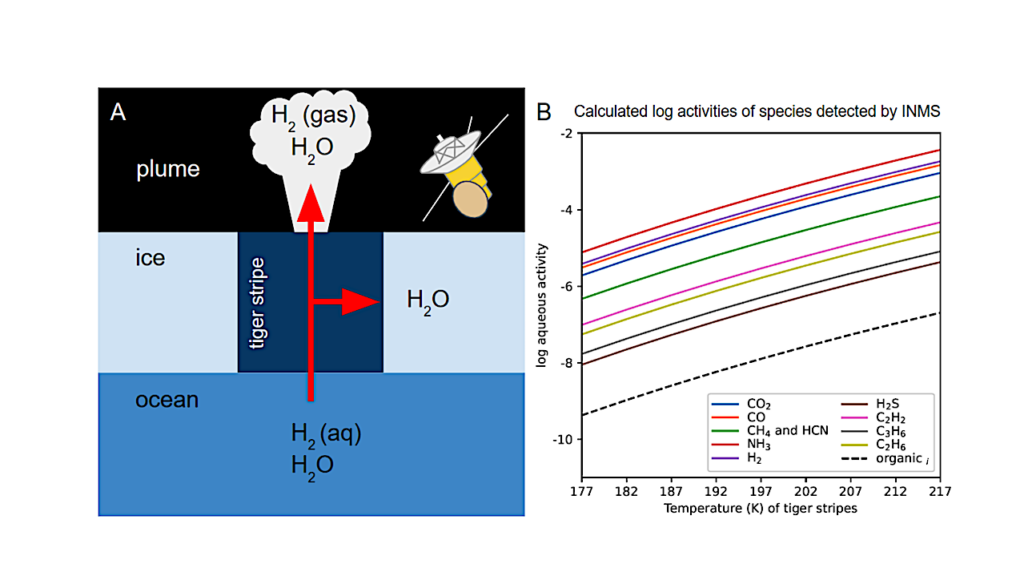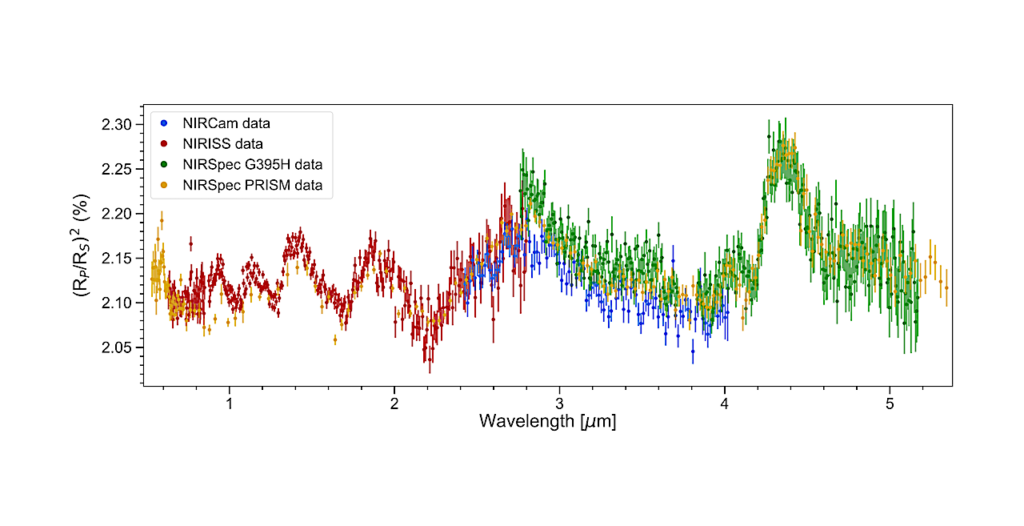A Molecular Production Line Inside a Busy Star Factory in a Starburst Galaxy

An international research team led by Sergio Martín of the European Southern Observatory/Joint ALMA Observatory, Nanase Harada of the National Astronomical Observatory of Japan, and Jeff Mangum of the National Radio Astronomy Observatory has observed the center of a galaxy known as NGC 253 that is producing many stars, using the Atacama Large Millimeter/submillimeter Array (ALMA).
They detected more than one hundred molecular species, far more than previous studies outside the Milky Way have detected. The high sensitivity of ALMA successfully detected molecules representing various stages of star evolution in the central region of NGC 253, and the high angular resolution of ALMA resolved the locations where these stages are taking place.
This wealth of data has allowed astronomers to better understand the physics and chemistry of this kind of galaxy. The wideband sensitivity upgrade as a part of the ALMA 2030 Development roadmap will make wide-frequency observations like this study much more efficient. We expect that the understanding of the starburst mechanism will advance through simultaneous observation of more tracer molecules.
In the Universe, some galaxies are forming stars at a much faster rate than the Milky Way (our Galaxy). These galaxies are called starburst galaxies. Starburst phenomena do not last forever. It is still a mystery how exactly such extremely prolific formation of stars can take place and how it ends.
The chance for stars to form depends on the properties of the raw material from which stars are born, molecular gas — a gaseous material made up of various molecules — is such material. For example, stars form in dense regions within molecular clouds where gravity can act more effectively. Some time after the active formation of stars, existing stars and explosions of dead stars impart energy to the surrounding medium, which could hinder future star formation.
These physical processes impact the chemistry of the galaxy and imprint a signature in the strengths of signals from molecules. Because each molecule emits at certain frequencies (see Figure 2 top), observations over a wide frequency range enable us to analyze the physical properties, and give us insights into the mechanism of starbursts.
Astronomers have gained a new understanding of phenomena related to star birth in a starburst galaxy. They detected more than one hundred molecular species in the center of a starburst galaxy known as NGC 253 located about 10 million light-years away. This chemical feedstock is the richest found outside the Milky Way, and it includes molecules that have been detected for the first time beyond the Milky Way, such as ethanol and the phosphorus-bearing species PN.
The observations were performed using the Atacama Large Millimeter/submillimeter Array (ALMA), a radio telescope in Chile. This survey was conducted as an ALMA Large Program named the ALMA Comprehensive High-resolution Extragalactic Molecular Inventory (ALCHEMI), led by Sergio Martín of the European Southern Observatory/Joint ALMA Observatory, Nanase Harada of the National Astronomical Observatory of Japan, and Jeff Mangum of the National Radio Astronomy Observatory.

(Top) Spectra from the ALCHEMI survey. (Bottom) A schematic image of the center of the starburst galaxy, NGC 253, describing locations where various tracer molecular species are enhanced according to the ALCHEMI survey. Credit: ALMA (ESO/NAOJ/NRAO), N. Harada et al.
First, this survey found the high-density molecular gas that is likely promoting active star formation in this galaxy. Each molecule emits at multiple frequencies, and their relative and absolute signal strengths change according to the density and the temperature. By analyzing multiple signals of some molecular species, the amount of dense gas in the center of NGC 253 turned out to be more than 10 times higher than that in the center of the Milky Way, which could explain why NGC 253 is forming stars about 30 times more efficiently even with the same amount of molecular gas.
One of the mechanisms that could aid the compression of molecular clouds into denser ones is a collision between such clouds. At the center of NGC 253, cloud collisions are likely to take place where streams of gas and stars intersect, generating shock waves traveling at supersonic speeds. These shock waves evaporate molecules such as methanol and HNCO frozen onto icy dust particles. When the molecules evaporate as gas, they become observable by radio telescopes such as ALMA.
Certain molecules also trace ongoing star formation. It has been known that complex organic molecules are abundant around young stars. In NGC 253, this study suggests that active star formation creates a hot and dense environment, similar to the ones seen around individual young stars (protostars) in the Milky Way. The amount of complex organic molecules in the center of NGC 253 turns out to be similar to that around protostars in the Galaxy.
In addition to physical conditions that could promote star formation, the survey also revealed the harsh environment left by previous generations of stars, which could slow down future star formation. When massive stars die, they cause massive explosions known as supernovae, which emit energetic particles called cosmic rays.
The molecular composition of NGC 253 revealed from the enhancement of species such as H3O+ and HOC+ that molecules in this region have had some of their electrons stripped off by cosmic rays at a rate at least 1000 times higher than that near the Solar System. This suggests a large energy input from supernovae, which makes it difficult for gas to condense to form stars.
Thus, as shown in Figure 2, the ALCHEMI survey revealed for the first time that there is a mix of locations at various stages of star evolution in the central region of NGC 253, thanks to the high spatial resolution achieved with ALMA.
Finally, the ALCHEMI survey provided an atlas of 44 molecular species, doubling the number available from previous studies outside the Milky Way. By applying a machine-learning technique to this atlas, the researchers were able to identify which molecules can most effectively trace the story of star formation mentioned above – from the beginning to the end.
As described above with some examples, certain molecular species trace phenomena such as shock waves or dense gas, which could aid star formation. Young star-forming regions host rich chemistry including complex organic molecules. Meanwhile, the developed starburst shows an enhancement of the cyano radical that indicates energy output from massive stars in the form of UV photons, which could also hinder future star formation.
Finding these tracers may help to plan future observations using the wideband sensitivity upgrade expected in the near future as a part of the ALMA 2030 Development roadmap, with which simultaneous observations of multiple molecular transitions will become much easier.

Excerpts from the ALCHEMI atlas of the center of NGC 253. The different colors represent the distribution of molecular gas (blue), shocked regions (red), relatively high-density regions (orange), young starbursts (yellow), developed starbursts (magenta), and molecular gas affected by cosmic-ray ionization (cyan). Credit: ALMA (ESO/NAOJ/NRAO), N. Harada et al.
Astrobiology, Astrochemistry








